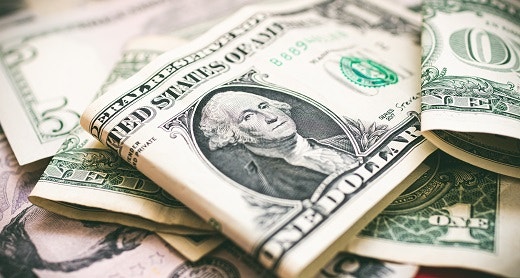Is the dollar slump finally over? Keys to a US dollar recovery
The US dollar is quietly bouncing off of April lows and has shown more resilience as trade policy firms up. Even so, the road to recovery might not be easy for the US dollar to return to 2024 highs.

Current State of the U.S. Dollar
As we reach the halfway point of 2025, it's clear that this has not been the year of the dollar, with significant depreciation against all major currencies. The Euro is up nearly 8% year-to-date, and the Swiss franc reached 10-year highs in April. While volatility shocks initially shook U.S. assets, both equities and bonds have now returned to their January levels. Despite this recovery in other asset classes, the U.S. dollar continues to lag, indicating ongoing challenges as traders analyze its future direction in a complex economic environment.
Impact of Trade and Policy on the Dollar
Recent trade announcements like the tariff pause with China have not significantly boosted the U.S. dollar, although they remain crucial in shaping market sentiment. Markets now evaluate trade developments by their impact on uncertainty, rather than immediate economic gains. The dollar's medium-term outlook is affected by policy uncertainty, which influences its role as the world's reserve currency. These macroeconomic factors, while not always impacting daily trade setups, play a critical role in longer-term strategy planning. The question remains whether future trade developments will provide the clarity needed to strengthen the dollar's position.
Analyzing Euro-Dollar and Macro Trends
The EUR/USD pair encapsulates the dollar's challenges and the broader market dynamics, rising nearly 8% year-to-date as market structures shift. While the Euro remains elevated, sustaining its rally proves difficult, trading from 1.1400 to 1.1100 after hitting 1.1500 in April. While several key announcements early in the year such as the EU's enhanced role in the Ukraine/Russia conflict gave substantial lifts to the euro from 1.0400, positive announcements for the US like last weekend's China deal failed to sustain the same support for the dollar. This dynamic of softer dollar rallies poses risks to dollar bulls long-term, despite market structure in recent weeks pointing bearish in EUR/USD. These macro trends, alongside correlations like the British pound's with gold, underline the importance for traders to remain informed and adaptable to changing conditions.
Opportunities in USD/JPY Amid Stability
The USD/JPY pair, down 7% this year, contrasts with other markets that have recovered, like U.S. equities and bonds. Despite traditional sensitivity to U.S. rates and uncertainty, the pair has seen less influence from recent developments, possibly indicating more room for upside. With recent higher highs and lows, the pair's structure supports potential growth. As interest rates become more prominent drivers of forex movements amidst stabilizing volatility, USD/JPY could capitalize on U.S. economic resilience. Traders should keep an eye on this pair for opportunities as it navigates between historical patterns and current market dynamics.
How to trade US dollar
- Open an account to get started, or practice on a demo account
- Choose your forex trading platform
- Open, monitor, and close positions on USD pairs
Trading forex requires an account with a forex provider like tastyfx. Many traders also watch major forex pairs like EUR/USD and USD/JPY for potential opportunities based on economic events such as inflation releases or interest rate decisions. Economic events can produce more volatility for forex pairs, which can mean greater potential profits and losses as risks can increase at these times.
You can help develop your forex trading strategies using resources like tastyfx’s YouTube channel. Our curated playlists can help you stay up to date on current markets and understanding key terms. Once your strategy is developed, you can follow the above steps to opening an account and getting started trading forex.
Your profit or loss is calculated according to your full position size. Leverage will magnify both your profits and losses. It’s important to manage your risks carefully as losses can exceed your deposit. Ensure you understand the risks and benefits associated with trading leveraged products before you start trading with them. Trade using money you’re comfortable losing.
